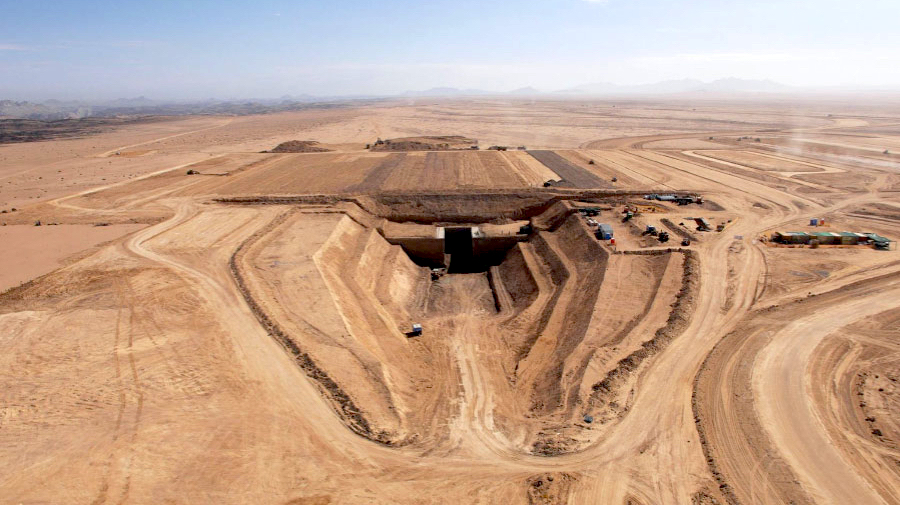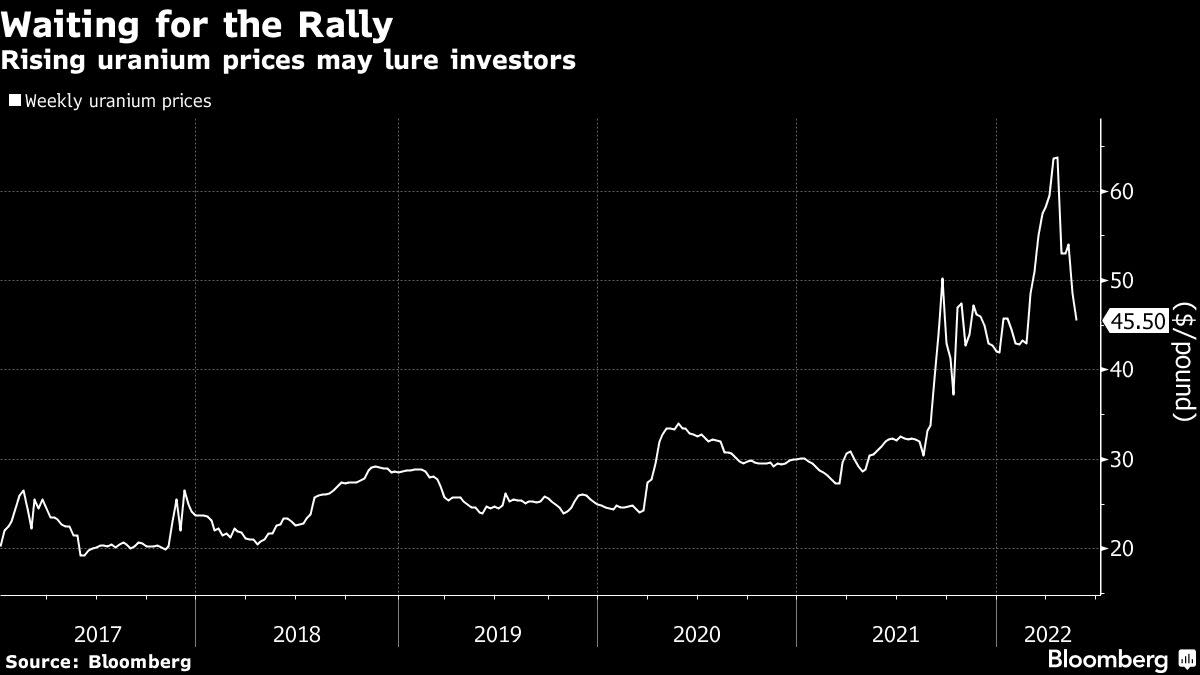
Namibia’s finance minister said uranium miners are waiting for prices to recover before reviving projects in Africa’s biggest producer of the ore, which is needed for nuclear power in a world shifting away from fossil fuels.
The semi-arid southwest African nation is investing in water facilities and is planning a second desalination plant to supply mines in the dry Erongo region in anticipation of higher uranium prices attracting investors, according to Finance Minister Ipumbu Shiimi.
“There are a number of uranium projects in the pipeline just waiting for the price to recover,” Shiimi said in an interview from Davos on Thursday. “If the price reaches $65-$70 a pound, then that will trigger more investment in uranium.”
There’s been a revival in demand for nuclear power since Russia’s invasion of Ukraine as nations scramble to reduce their dependence on fossil fuels. That’s spurred a rally in uranium, with prices more than tripling from a 2016 low to $63.75 a pound in April.
The UK plans to triple its installed nuclear power capacity by 2050, and Belgium is negotiating to keep two reactors open. South Korean President Yoon Suk Yeol plans to make nuclear energy central to the nation’s climate goals. California, the birthplace of the US anti-nuclear movement, is reconsidering plans to close its only remaining set of reactors.
“The rising price of uranium has incentivized uranium miners to ramp up exploration and production,” John Ciampaglia, chief executive officer of Sprott Asset Management, which launched the world’s first uranium physical trust last year, said in a presentation dated May 17. “Worldwide, 57 new nuclear plants are under construction and 97 are planned, but current uranium production is failing to meet demand.”

For now, only two of Namibia’s three mines are producing the nuclear fuel — Rossing Uranium Mine and Husab Uranium — controlled by Chinese investors. Australia’s Paladin Energy Ltd. plans to resume commercial production at its Langer Heinrich mine by 2024.
There are five mining areas under exploration in the country, according to the Namibian Uranium Association. Among the projects:
Uranium prices, which touched a record in 2007, have been languishing for almost a decade.
“BNEF anticipates both — Russia’s war on Ukraine and the rush for clean energy — will lead to greater interest in nuclear and uranium,” said Chris Gadomski, a nuclear industry analyst with Bloomberg NEF. “We are already seeing increased production in Canada, Namibia, and Niger.”
The recent rally in prices of other metals has also helped Namibia improve its trade balance, Shiimi said.
The country’s next focus is on exporting energy to neighboring South Africa. In November, it chose Hyphen Hydrogen Energy for a $9.4-billion project that’s expected to produce 300,000 tonnes of green hydrogen a year. The country also has significant wind and solar resources.
Other plans by Namibia to lure investors:
(By Samuel Gebre and Felix Njini, with assistance from Stephen Stapczynski)
Comments